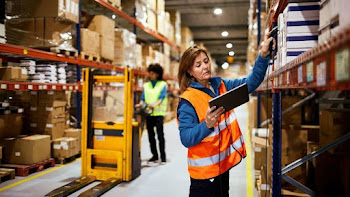How Barcodes Definition Work? History & Future Trends 2025
1. What Is the Barcode Definition in 2025?
Barcodes are everywhere—from your grocery store purchases to industrial shipping labels. The Barcodes Definition in 2025 refers to the method of encoding information using a visual pattern of lines or shapes that machines can scan and interpret. Whether it's a traditional linear barcode or a modern 2D version, the goal remains the same: quick data capture.
2. How Barcode Technology Works: A Simple Breakdown
Understanding how barcodes work is easier than you think. A barcode scanner reads the pattern of black-and-white lines or squares and translates it into digital data. That data is then sent to a computer system that processes and stores the information. In 2025, this process is even faster thanks to smart scanners and mobile apps. The Barcodes Definition includes not only the design of the code but also the entire scanning and processing system behind it.
3. The History of Barcodes: From Invention to Global Use
The journey of barcodes began in the 1940s, but it wasn’t until the 1970s that they were widely adopted in retail. The very first product ever scanned using a barcode was a pack of Wrigley’s gum. Over the decades, the Barcodes Definition evolved as technology advanced. Today, barcodes are essential in nearly every industry—retail, healthcare, manufacturing, and logistics.
4. Types of Barcodes: 1D, 2D, QR Codes & More
There are many types of barcodes in use today. The most common is the 1D (one-dimensional) barcode, which is the classic series of vertical black bars. Then there are 2D barcodes like QR codes, which store more data in a square pattern. In 2025, advanced versions of 2D barcodes are used in supply chains, logistics, and even event management. Each format has its place, and understanding their differences is part of understanding the full Barcodes Definition.
5. Real-World Applications of Barcode Technology Today
In 2025, barcodes are more than just grocery tools. Hospitals use them to track patient medication, while warehouses depend on them for inventory control. Restaurants scan QR codes for contactless menus. These real-world applications expand the Barcodes Definition to include security, tracking, and customer convenience.
6. Barcode Systems and Their Role in Modern Business Operations
Barcode systems help businesses work smarter. With barcode software and scanners, companies can automate stock management, reduce human error, and save time. This streamlined workflow is now critical in fast-paced industries. When we talk about the Barcodes Definition, it includes this integration of hardware, software, and practical business usage.
7. Benefits of Using Barcodes in 2025
The advantages of using barcodes are countless. They speed up transactions, ensure data accuracy, and improve traceability. For businesses, this means reduced costs and better decision-making. For consumers, it means faster service and improved experience. The Barcodes Definition today implies not just data reading—but real value creation through automation.
8. Barcode Integration in Mobile and Cloud Platforms
Mobile barcode scanning apps and cloud-based systems have revolutionized how businesses use barcode technology. Employees can now scan items using their smartphones and instantly sync data with the cloud. This flexibility adds a new dimension to the Barcodes Definition, enabling businesses of all sizes to implement barcode systems affordably and efficiently.
9. The Future of Barcode Technology: Trends to Watch in 2025
Looking ahead, barcodes are becoming smarter. In 2025, trends include color barcodes, invisible barcodes for luxury goods, and barcodes with embedded security features. Another growing trend is AI-integrated barcode systems that predict inventory needs based on scan data. As the Barcodes Definition continues to evolve, we can expect barcodes to become even more intelligent and adaptable.
10. Barcodes vs RFID: What’s Better for Modern Businesses?
Both barcodes and RFID (Radio Frequency Identification) have their strengths. RFID can read multiple tags without line of sight, making it ideal for high-speed logistics. However, barcodes are still more affordable and accessible, especially for small businesses. The Barcodes Definition doesn’t compete with RFID—it complements it, offering a cost-effective solution for many use cases.
11. How to Implement Barcode Solutions in Your Business
Implementing a barcode solution starts with choosing the right barcode type for your needs. Next, invest in scanners and label printers, and then integrate barcode software with your inventory or POS system. Training your staff and testing the system are also crucial. All these steps fall under the practical side of the Barcodes Definition, turning theory into real-world results.
12. Final Thoughts: Why Barcode Technology Remains Vital in 2025
Despite new technologies, barcodes remain a foundation of business operations. They are simple, reliable, and incredibly effective. The Barcodes Definition in 2025 is broader and more impactful than ever—it’s not just about scanning labels but about enabling smarter, faster, and safer business practices.
Call to Action:
Want to upgrade your business with smart barcode solutions? Contact AIDC Technolog ies India today and discover how our expertise can help you stay ahead with the latest in barcode innovation.


Comments
Post a Comment